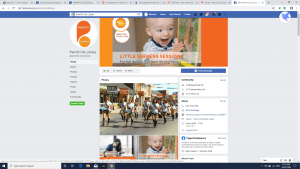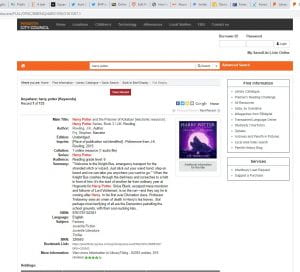The goal of collection development for a school library must be to provide the library with a collection that reflects students’ needs and supports the mission of the school as well as the particular needs of the members of the school community (Kimmel, 2014). One of the key present and future purposes of the school collection is to serve a 21st century online Australian Curriculum which “supports all young Australians to become successful learners, confident and creative individuals and active and informed citizens” (AEM, 2008, p. 13; Mitchell, 2011). Library collections and resources are designed to allow students to use information and digital literacy skills to leverage the power of technologies to ensure their voices are heard and to have opportunities to deal with issues that will affect them and future generations. Another key role of the school library is to help teachers become more inclusive so that they can incorporate resources that are both in print and in multiple online formats to maximise students’ engagement and learning (Tait et al., 2019).
The IFLA Trend Report (“IFLA Trend Report”, 2013) identifies that new technologies are transforming the global information environment. The IFLA Trend Report (“IFLA Trend Report”, 2018) states that the libraries can make the internet more useful for the users. These trends are shaping the school collection and the library services provided to the school community. The provision of a wide range of material across a range of technologies is a priority. Librarians also need to consider the information needs of the school community in the teaching-learning context of the school and to match the collection with the learner characteristics as well as ensuring that the collection is consistent with the current knowledge base (Hughes-Hassell & Mancall, 2005).
Keeping a balanced collection that is catered for the needs of the students who need physical books and virtual resources is the priority in the collection development. Hughes-Hassell and Mancall (2005) suggested a decision-making model for selecting resources that support a learner-centred collection. I discussed a selection model that I thought would fit in the context of my school library in my blog posting for Module 2.1 “Selecting my own selection decision-making model”. I also discussed the evaluation methods that would be feasible and practical to be implemented in my school library in my blog posting for module 5.1 “Models and methods for collection evaluation”. Selection and evaluation are integral parts of collection development. The traditional practice of just-in-case philosophy in anticipation of what might be needed by students need to be changed. Teacher librarians need to envision the current and future needs of the students and implement a working procedure for selecting and evaluating the e-book collection (Grigg, 2012). In my blog posting for Module 2.1, I have also discussed the tightening of budget across many school libraries which is limiting teacher librarians’ ability to select collections. Under such budget constraints, reassessment of the library’s role in the information access process within the school is required. Teacher librarians, as the makers of the collection development policy (CDP) need to become more proactive and be involved in feasible and realistic planning of the budget for sourcing the online resources, the subscriptions to which are often associated with high costs (Wade, 2005).
Collection Development Policy describes the underlying principles and parameters of the school’s collection of information resources and is essential for all school libraries (New South wale Department of School Education Curriculum Directorate, 1996, p. 24 – 25). CDP is a strategic document that assists in future proofing of the library collection. CDP addresses issues associated with censorship and intellectual freedom and the acquisition of controversial materials (Hoffman & Wood, 2007). Library collections are becoming multi-formatted; consequently, copyright and censorship issues in relation to e-collection are more prominent than ever in response to the change of the information landscape. Censorship in relation to restricted access and filtering are widely applied in school libraries to ensure students’ online safety. I exampled some common copyright questions students and teachers may have when using e-resources in my forum discussion for Module 4.1 “Copyright questions and answers for teachers and students”. The CDP provides direction or resources for finding answers for copyright issues and teacher librarians are the experts to respond to these queries.
A well thought out Collection Development Policy promotes collaboration between the school administrators and the teacher librarians in the planning of library collections that serve the current and future needs of the learners. The key factor determining the degree to which school librarians are permitted to be involved in decision making processes regarding intellectual freedom appears to rest more on professional intangibles such as the collegiate relationship with administrators (Hoffman & Wood, 2007). Teacher librarians and school administrators need to work collaboratively in order to develop a learner-centred collection (Hughes-Hassell & Mancall, 2005). The CDP sets out guidelines that stakeholders can all follow when discussing about controversial issues about the selection of materials. In my forum discussion for Module 6.2 “Key takeaway from your readings on censorship”, I discussed about collection selector’s self-censorship which can make selection a subjective exercise (Dawkins, 2018). The CDP helps teacher librarians avoid self-censorship and subjective selection of collections. CDP is “a public document concerned with what the collection will contain and why it exists” (New South Wale Department of School Education Curriculum Directorate, 1996, p. 24 – 25). It formalises all the procedures and practice undertaken by the librarians. When dealing with disagreements about selection decisions, the CDP works as a guideline and promotes constructive discussions between stakeholders who may also be involved in the planning and writing of the CDP (Dawkins, 2018).
Various models of CDP are available for the teacher librarians as references to write up their own CDP in the “voice” of the organisation and within the school context. In my two blog postings for Module 6 “Compare different models of collection policies” and “CDP content investigation” , and my forum discussion for Module 6.1 “Editing a CDP”, I analysed the different approaches adopted by the various models of CDP and identified the areas of concern for my school library’s CDP. Regardless of which model is chosen, the CDP must cover the issues in relation to electronic accessing of information and resources. The library needs to become a more vibrant entity and is capable of utilising and exploiting new electronic sources of information (Wade, 2005). The CDP needs to reflect this change in order to remain relevant as a guidance for the procedures and practice of the library.
References
Australian Education Minister (AEM). (2008) (n.d.). Melbourne declaration on educational goals for young Australian. http://www.curriculum.edu.au/verve/_resources/National_Declaration_on_the_Educational_Goals_for_Young_Australians.pdf
Corrall, S. (2018). The concept of collection development in the digital world. In M. Fieldhouse & A. Marshal (Eds.). Collection development in the digital Age. (pp.45-48). Facet. https://doi-org.ezproxy.csu.edu.au/10.29085/9781856048972
Dawkins, A.M. (2018). The decision by school librarians to self-censor: The impact of perceived administrative discomfort. Teacher Librarian, 45(3), 8-12.
Education Services Australia (ESA). (2020). Find digital resources aligned to the Australian Curriculum. https://www.esa.edu.au/solutions/our-solutions/scootle
GLAM Peak. (2016). Digital access to collections: framework. http://www.digitalcollections.org.au/framework
Grigg, K. (2012). Assessment and evaluation of e-book collections. In R. Kaplan (Ed.), Building and Managing E-Book Collections (pp. 127-137). Neal-Schuman.
Hoffman, F. W., & Wood, R. J. (2007). Library collection development policies: School libraries and learning resource centers. Scarecrow Press.
Hughes-Hassell, S. & Mancall, J. (2005). Collection management for youth: responding to the needs of learners. ALA Editions.
IFLA (2013). IFLA trend report: Discover the trends. https://trends.ifla.org/
IFLA (2018). IFLA trend report: IFLA trend report 2018 update. https://trends.ifla.org/update-2018
Johnson, P. (2009). Fundamentals of collection development and management. ALA Editions.
Kimmel, S.C. (2014). Developing collections to empower learners. American Library Association.
Mitchell, P. (2011). Resourcing 21st century online Australian curriculum: The role of school libraries. FYI: the Journal for the School Information Professional, 15(2), 10-15.
New South Wale Department of School Education Curriculum Directorate (1996). Handbook for school libraries. N.S.W. Dept. of School Education, Curriculum Directorate.
Tait, E., Vo-Tran, H., Mercieca, P., & Reynolds, S. (2019). Don’t worry, a school library with fewer books and more technology is good for today’s students. The Conversation. http://theconversation.com/dont-worry-a-school-library-with-fewer-books-and-more-technology-is-good-for-todays-students-114356
Wade, C. (2005). The school library: Phoenix or dodo bird? Educational Horizons, 8(5), 12-14.


